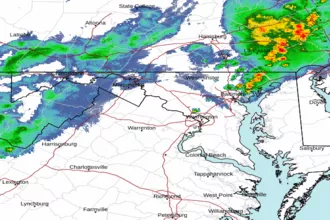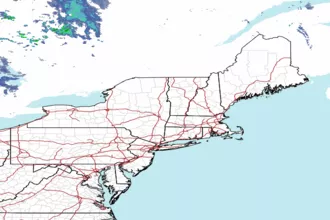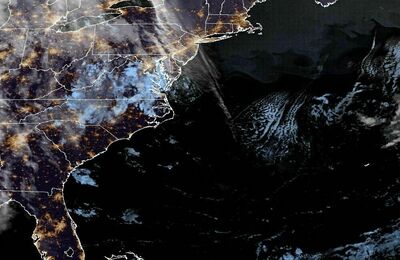
Tidal Potomac from Cobb Island MD to Smith Point VA Marine Forecast
| Today...W Winds 5 Kt. Waves Less Than 1 Ft. |
| Tonight...Sw Winds Around 5 Kt. Waves Flat. |
| Sat...Sw Winds 5 To 10 Kt. Waves 1 Ft. |
| Sat Night...W Winds 5 To 10 Kt. Waves 1 Ft. Rain Likely. |
| Sun...Nw Winds 20 To 25 Kt With Gusts To 30 Kt. Waves 3 Ft. A Chance Of Snow. |
| Sun Night...Nw Winds 20 To 25 Kt With Gusts To 35 Kt. Waves 4 Ft. |
| Mon...Nw Winds 15 To 20 Kt...Becoming Sw 10 To 15 Kt. Waves 2 To 3 Ft...Subsiding To 1 Ft. |
| Tue...Nw Winds 5 To 10 Kt...Becoming Ne In The Afternoon, Then Becoming S. Waves 1 Ft. |
| Area Forecast Discussion National Weather Service Baltimore MD/Washington DC 1004am EST Fri Dec 12 2025 Synopsis A fast-moving low pressure system will cross south of the region today. A strengthening wave of low pressure may impact the area Saturday night into Sunday before Arctic high pressure moves in by early next week. This ridge exits offshore by the middle of the week ahead of the next frontal system, which will bring temperatures closer to normal again. Near Term - Through Tonight Water vapor imagery shows a weak disturbance embedded within west-northwesterly flow currently located over southern Ohio. This disturbance will continue to rapidly track toward the east-southeast over the course of the day. Guidance has trended slightly southward with the track of this disturbance, which has led to a trend toward a drier forecast across the Central Shenandoah Valley and Central Virginia. Earlier Winter Weather Advisories have been cancelled as a result. It's still possible that portions of Highland, Augusta, Nelson, and Albemarle Counties could receive a coating of snow, but confidence is high that Advisory criteria of two inches won't be reached. Any light snow would come to an end by mid-afternoon, if it occurs at all. Further north, just cloudy conditions are expected today across the DC and Baltimore metros. High temperatures are expected to be in the 30s across the lower elevations, with 20s in the mountains. As we move into tonight, a stray flurry or a bit of freezing fog could be possible anywhere across the forecast area. The best chance for snow will be in the Alleghenies within a brief surge of upslope flow. A coating of snow could be possible there overnight. Short Term - Saturday Through Sunday Night A weak ridge of high pressure will become centered over the region on Saturday. Mostly cloudy skies and dry conditions are expected, with highs in the upper 30s to mid 40s for most (20s mountains). Meanwhile, much further to the west, the waveguide across North America will start to amplify as a system tracks toward the British Columbia coast. A ridge building event will ensue downstream over western Canada, which will cause a pre- existing upper low over the Upper Great Lakes to drop southeastward toward the Mid- Atlantic and amplify into a shorter wavelength open wave. As this occurs, large scale forcing for ascent will increase across the area Saturday night. Precipitation could start as early as the evening in the Alleghenies, before spreading eastward during the overnight hours. As the wave amplifies, most models show a jet steak developing downstream, with an enhanced band of precipitation developing in the equatorward entrance region of the jet streak. While there's still some uncertainty with respect to exactly where this band winds up, most solutions have this enhanced band of precipitation developing along the I-95 corridor Saturday night. This could result in a relative minimum in precipitation between the Blue Ridge and the Alleghenies, with higher totals along the I-95 corridor (where the best synoptic forcing will be) and in the Alleghenies (where there will be some additional upslope snow as the system departs). With such a narrow banded feature, there's still a fair amount of uncertainty with respect to how much precipitation will ultimately fall. Precipitation could also potentially start as a brief period of rain along the I-95 corridor before much colder air rushes in later during the night behind an Arctic front. For these reasons, a wide variety of potential solutions exists, especially along the I-95 corridor. Further west, a high end- advisory or low-end warning level snowfall appears likely. Between the Allegheny Front and Blue Ridge lesser Quantitative Precipitation Forecast amounts are likely with all precipitation likely falling as snow. Most solutions show a coating to two inches of snow in this area, but as much as 4 inches could be possible in a high end scenario in the Shenadoah Valley. Further east, around the I-95 corridor, the widest range of potential solutions exists. If most of the precipitation were to fall as rain, or the band of higher Quantitative Precipitation Forecast were to shift northward out of the area, as little as a coating to an inch of snow could occur. Currently, we have 1-4 inches of snow forecast as the most likely scenario to the east of the Blue Ridge. In a high end scenario, as much as 6 inches of snow could occur under the heaviest part of the band if the precipitation stays all snow. Aside from the threat for snow early in the day, winds will pick up substantially behind this arctic front by Sunday afternoon. Expect wind gusts out of the northwest up to 30 mph, with gusts closer to 45 mph on the ridgetops out west. Wind headlines cannot be ruled out for the ridges during this timeframe as a result. While winds will taper off into late Sunday night and into the pre-dawn hours on Monday, there will still be enough of a breeze to significantly drop wind chills. The arctic high likely brings some of the coldest air of the season thus far. Expect lows to be in the teens for most (single digits in typically well- radiated spots, especially those with a snowpack. Mountain locations can expect lows in the single digits, with some of the higher spots likely struggling to go above zero. Combine this with continue gusty winds, and there is the potential for our first Cold Weather Headlines of the season out over the Alleghenies. Long Term - Monday Through Thursday Canadian high pressure settles overhead Monday into Monday night allowing the winds to gradually settle down. Gusts of 15 to 25 mph can be expected through the afternoon with highs for most struggling to make freezing. Mountain locations will remain in the mid to upper teens throughout the day. The added wind will keep wind chills in the single digits over the mountains with low to mid 20s elsewhere across the region. Lows Monday night will fall into the mid to upper teens and low 20s under clear skies. The cold weather pattern will be replaced with a warmer one Tuesday into Wednesday. The deep upper level trough that dominated the weather pattern over the last several days shifts offshore with ridging building aloft. This will allow for more of a zonal flow pattern into the region. Warm air advection will ensue at the surface late Tuesday into Wednesday as a warm front lifts toward the region. The warm front will be associated with an area of low pressure across the western Great Lakes which will drag a cold front toward the region next weekend into early next week. Until then expect a chances for a few showers Wednesday and Thursday along with temperatures that look to warm back to normal and above normal levels. Highs Wednesday look to push back into the mid 40s and low 50s with mid to upper 50s Thursday. Mountain locations will remain a touch cooler in the low to mid 40s. Marine High pressure sliding overhead and eventually offshore today into Saturday will lead to generally light winds out of the south today. Winds will pick up a bit on Saturday, but should stay below SCA (Small Craft Advisory) criteria. An Arctic front will move over the waters late Saturday night. Winds will shift to northwesterly behind the front, with SCA conditions likely late in the night into Sunday. Additionally, could see some snow Sunday morning, especially in the upper tidal Potomac and much of the central/northern Chesapeake Bay. Gale conditions become possible by Sunday afternoon and continue through Monday morning in the wake of the arctic front. Gale conditions diminish Monday morning. Winds further drop below sub-SCA (Small Craft Advisory) levels Monday evening and remain below on Tuesday. SCA (Small Craft Advisory) conditions return with a warm front Wednesday. NOAA Baltimore MD/Washington DC Office: Watches - Warnings - Advisories DC...None. MD...Winter Storm Watch from Saturday afternoon through Sunday afternoon for MDZ509. VA...None. WV...Winter Storm Watch from Saturday afternoon through Sunday afternoon for WVZ501. Marine None. |
 Baltimore/Washington Radar
Baltimore/Washington Radar Northeast Radar
Northeast Radar East Coast Satellite
East Coast Satellite